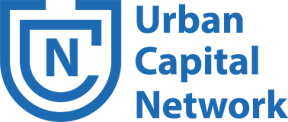It is never too early to think about funding your retirement. You want to have enough set aside to enjoy your post-career life.
Traditionally, people have turned to IRAs and employer-sponsored 401k funds to grow their retirement funds.
These vehicles may be fine for the average investor, but some people prefer to have greater control. If you enjoy being in charge of how your money grows, a self-directed 401k or IRA may be the right choice for you.
What is a self-directed IRA?
An SDIRA is an investment product similar to other IRAs. It comes in both regular and Roth varieties, giving investors options of when to pay the taxes on the income. However, a self-directed IRA provides greater freedom for investors.
In a self-directed arrangement, an appointed custodian administrates the fund, but the owner makes the investment decisions. Investors must take a hands-on approach to their retirement funds. The fund custodian’s job is to buy and sell according to the directives of the investor.
These retirement products have access to a wider variety of investment options. While traditional funds work with stocks, bonds, and CDs, a self-directed vehicle can include investment opportunities such as real estate and commodities.
The Benefits of an SDIRA
People who enjoy investing and following markets may see several benefits from a self-directed 401k or IRA. They are free to do market research and follow through with investment decisions. For some investors, this arrangement offers a welcome sense of control and oversight.
Including alternative investments is another positive attribute. Long-term real estate investments can provide a stable base for growth. Higher-risk investments like commodities and cryptocurrencies may allow short-term gains that will outpace the stock market.
At the same time, an SDIRA provides the same tax benefits as traditional IRA products. For example, withdrawals from a Roth SDIRA do not incur income tax in retirement.
The Risks of an SDIRA
The potential risks of self-directed funds relate to the independence and flexibility they offer. The fund administrator merely holds the fund on behalf of the investor. They are prohibited from offering advice, so they cannot protect you from bad investments. Some investors will work with an independent financial advisor as they make decisions about their funds.
Cashing in investments can represent another challenge. Typical investments like stocks and bonds are relatively easy to buy and sell. Most transactions happen in less than a business day. More complicated investments like real estate can delay the process. If you are trying to sell a rental property, there is no guarantee of an immediate buyer.
Opening an SDIRA
An SDIRA is a specialized financial product and is not available from every broker. You will need to find a knowledgeable provider who is willing to serve as your custodian.
Once you have established your plan, the same contribution rules apply as with traditional IRAs. Currently, you can contribute up to $6,000 per year if you are under 50. People 50 and older can contribute an extra $1,000.
Getting the Most from an Self-Directed IRA
With a self-directed fund, diligence is critical. You are responsible for the success or failure of your investment strategy. Your research should begin with understanding the limits of the products offered by different providers.
Although self-directed funds allow for less common investment opportunities, custodians are not required to work with every type. If you are interested in using IRA funds to invest in precious metals, you want to confirm that your custodian works with that type of investment.
Self-directed fund owners should expect to pay more attention to their portfolios. With IRAs, the custodian manages the investments to protect investors from losses. You are responsible for maintaining growth and handling market downturns with an SDIRA.
Because of the higher risks involved with self-directed funds, these products may be a better fit for younger investors with more time to make up losses. As you near retirement, you will want to keep your money in a low-risk environment.
Is a self-directed retirement account the right choice for you?
Choosing a self-directed retirement vehicle is often a matter of personality. If you are someone who stresses out at the first sign of a volatile market, this type of investment is probably not for you.
However, if you have the time, interest, and risk tolerance to handle changing markets, a self-directed fund can be a thrilling financial venture.
Researching unique investments will allow you to learn more about the world of finance. You can carefully examine new businesses, follow emerging trends, and discover the challenges of the real estate market. At the same time, tolerating a higher risk can lead to greater returns and more funds to enjoy at the end of your career.
For the right investor, self-directed retirement funds are an exciting and profitable way to save for the future.

